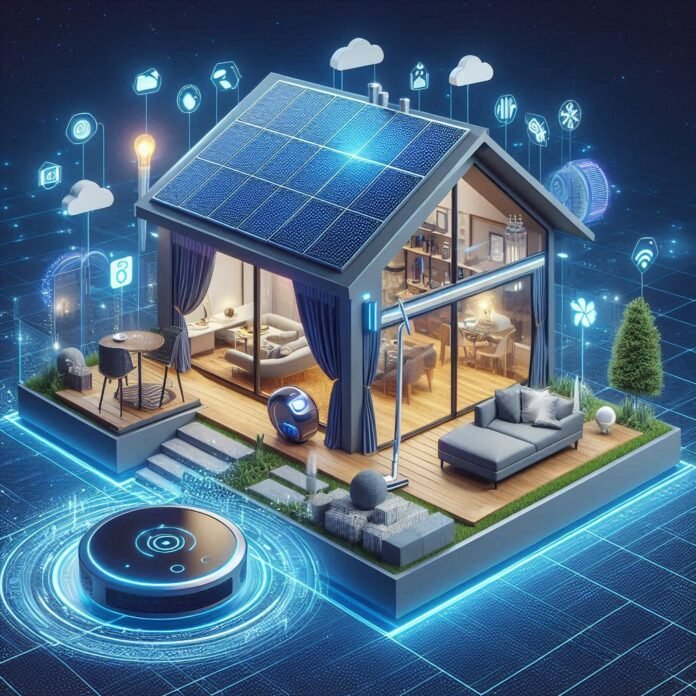Introduction
The pace of today’s life demands and extradites the smart home concept, which is no more fantastic than it is real. In its incorporation of advanced technology, the smart homes seeks to create a seamless, efficient living environment, making every chore easier and more convenient. From voice control over your lighting to remote monitoring of the security of your home, the smart homes is revolutionizing the way we live.
Key Components of a Smart Home
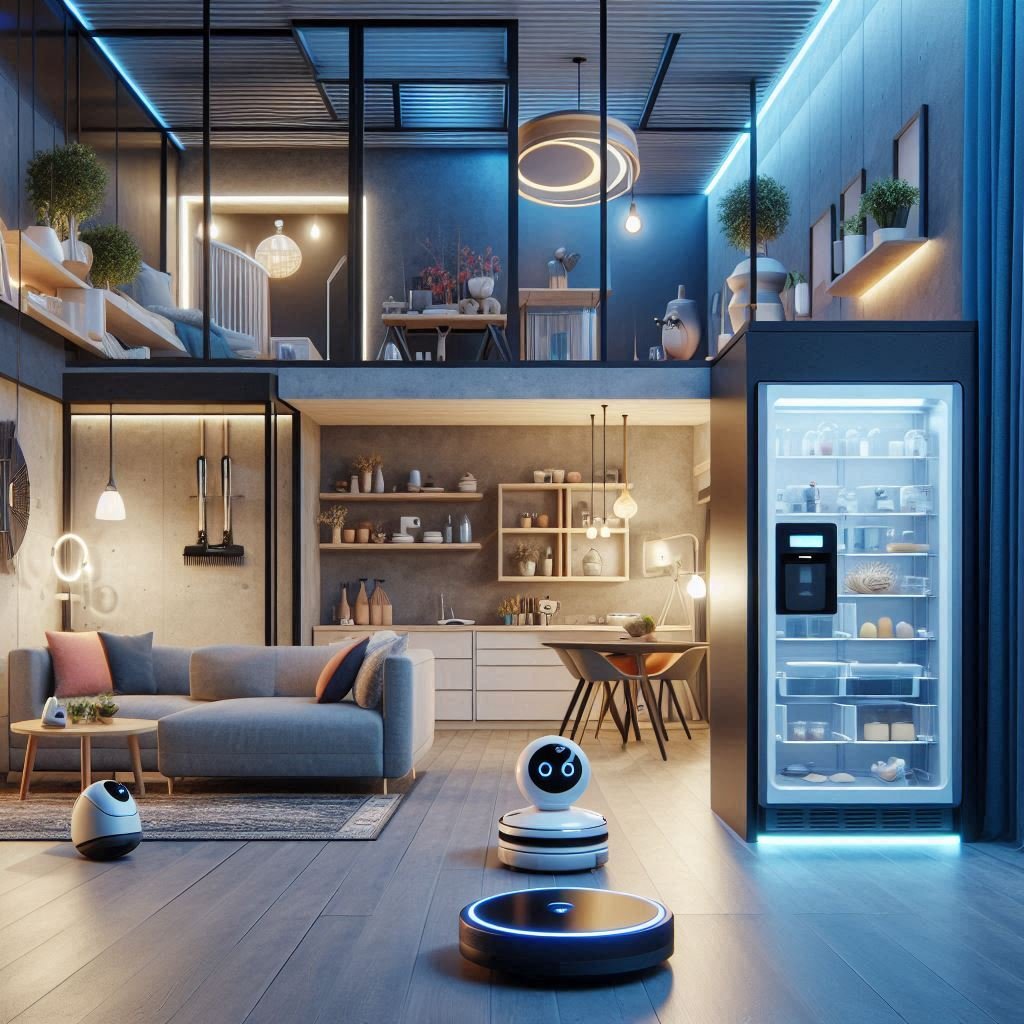
Home Automation Systems
In the heart of any smart home lies the home automation system. It interrelates devices within a home and can be remotely controlled. Automation lets your house do things like set the thermostat according to your schedule or turn off the light in a room if nobody is present,One of the beauties of home automation is the fact that it makes daily routines much smoother and more efficient, significantly improving the quality of life.
Smart Devices and Gadgets
Basically, smart homes are made up of a wide variety of smart devices and gadgets, all of which are networked to work harmoniously in a cohesive setup. These smart devices include smart thermostats, intelligent lighting systems, and advanced security cameras that will provide modern automated homes with peace of mind. Each is designed to be controlled via a central hub or mobile app, allowing house owners to customize and manage their home environment with ease. For instance, smart thermostats adapt to what your personal preferences are and then change the temperature. Smart lighting will adjust the time of day and accommodate what you are doing at that particular hour.
Advantages of Smart Home Technology
Increased Protection for Your House
One of the most outstanding advantages of a smart home is increased security. Such a system incorporates surveillance cameras, motion detectors, and smart locks that one can monitor and control from anywhere in the world. This thus means that you can have a view of how your home is running from any part of the globe, getting real-time alerts in case something awkward happens. In addition, a video doorbell is capable of giving you a clear view of whoever is standing at your door and allows you to communicate with them without opening your door at all, thereby adding to the security of your home.
Energy Efficiency and Cost Savings
Other potential advantages of a smart home are energy efficiency and saving money. Smart thermostats, for example, might consider your schedule for heating and cooling and significantly reduce energy use. In the same way, smart lighting could turn off when it is not in use to reduce electricity consumption. Homeowners who take advantage of this technology will be able to save money on utilities while at the same time being responsible towards the environment.
Convenience and Comfort
The smart homes also excels in areas related to convenience and comfort. Imagine driving home after a long day and having your home automatically set to your preferred temperature, playing your favorite music, and adjusting the lights as per your preferred ambiance. Smart home technology makes these scenarios real by enhancing your living experience through always ensuring that your home environment is adjusted according to your preferences.
Voice-Controlled Assistance
Along with this comes with the voice-controlled assistants, such as Amazon Alexa or Google Assistant. In using these devices, you can control several aspects of your home with your voice. From dimming the lights and setting the thermostat to playing your favorite playlist, it is all easy and quick with voice assistants. This hands-free control does not only add to convenience but also makes the interaction with the technology in your home more intuitive.
Remote Monitoring and Control
In fact, one of the most impressive features of smart homes is remote monitoring and control. You will be able to receive real-time data from your devices via mobile apps and web interfaces and change settings as per your requirements. forget to turn off appliances you may have left on, or know the status of your security at home. Be it anywhere, you will still always be in control.
Setting Up a Smart Home
A smart home starts by choosing the right devices and setting it up.One will want to pick those that work well with each other and meet one’s needs. Probably start with a central hub or smart speaker for your command center for all smart devices. Add smart thermostats, lights, security cameras, and whatever else you want and like.
Integration with Existing Systems
If you already have some home automation systems put in place, you’ll want to make sure new smart devices work well with your existing setup. Most new-generation smart devices are designed to work with popular home automation platforms, but it’s always good practice to check before buying for compatibility. Integration helps in having one coherent system wherein all of your devices work harmoniously together.
Checking for Compatibility
Compatibility is very important when setting up a smart home. Ensure that the devices chosen are compatible with the existing infrastructure of your home and with one another. For instance, if you have installed any smart speaker that works on a certain platform, ensure that other gadgets you buy work well with that particular platform. This will ensure that the smart home system works as expected: smoothly and efficiently.
Smart home automation advancements, ecosystems and upcoming technologies
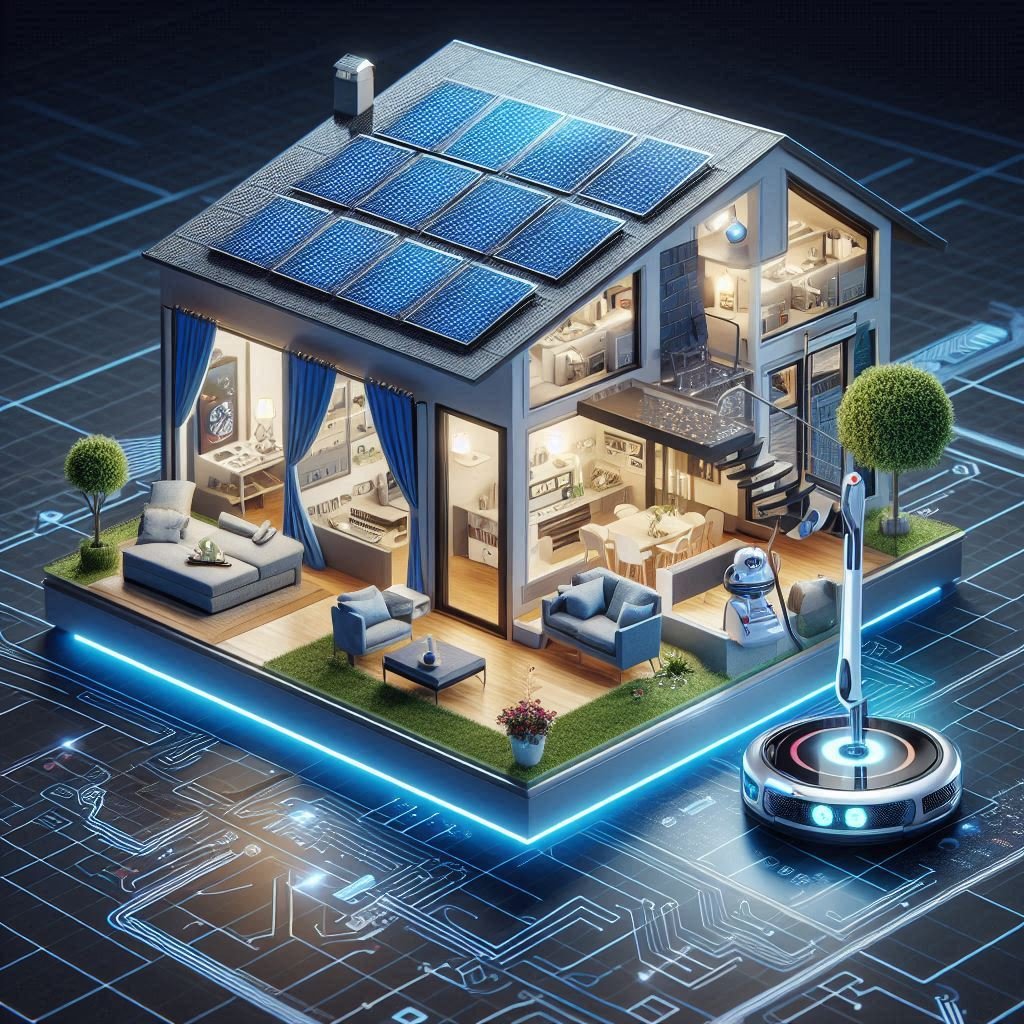
Advancements in Home Automation
The home automation sector keeps changing and evolving at a very high speed. Now, in 2024, there are further developments in artificial intelligence integration, allowing for a more personalized and intuitive smart home experience. AI-driven systems are capable of learning from your habits and preferences to provide further customized automation solutions.
Upcoming Smart Technologies
A raft of emerging technologies is constantly framing the future of the smart homes. Among the most remarkable innovations are smart glass that tints itself depending on the sun’s intensity and high-end air purification systems that link to home automation networks. These technologies promise to enhance comfort, health, and sustainability inside homes.
Smart Home Ecosystems
Popularity for smart homes ecosystems is increasing. Technology giants are developing integrated solutions to see many smart devices brought together seamlessly under one roof. The offer includes a single-user experience, making it easier for a householder to manage and control his smart home appliances. Businesses also target interoperability so that devices from different manufacturers will work together seamlessly.
Challenges and Considerations
Privacy and Security Concerns
While the smart home certainly offers a lot of benefits, it also heightens concerns over privacy and security. Given that the nature of smart devices is to interconnect, sensitive information may be open to cyberattacks. Using strong passwords, enabling two-factor authentication, and regularly updating device firmware can reduce these risks.
Cost vs. Benefits
While smart home setup can be rather pricey due to high-end devices and systems, long-term benefits often balance out the investment. All one needs to do is balance the factors against how smart homes technology adds value to one’s lifestyle.
Technological Limitations
Setup costs for a smart home, mainly high-end devices and systems, may be quite expensive. Long-term benefits, though—enhanced security and energy savings—are mostly larger than the upfront costs. Despite its rapid growth, smart home technology is, nevertheless, not free from problems. Incompatibility issues, occasional connectivity problems, and constant updates—getting through these can be stressful. Keeping oneself updated about the latest developments and using reliable devices can avoid most of these issues.
The Future of Smart Homes
Predictions for Smart Home Technology
Ahead of us lies a bright future for the smart homes. More development in AI, further interaction with other upcoming technologies, and enhanced user experience are foreseen in times to come. Besides, the trend of sustainable and energy-efficient solutions will be a sure thing on the agenda, as most environmentally friendly homeowners currently show a desire for green options.
The Effect on Everyday Life
The smart home is going to make a really significant impact on everyday life. Further with the evolving technology, smart homes are going to be ever more intuitive and responsive to our needs. Convenience, efficiency, and security of smart homes are further going to continue improving life and will make them an integral part of modern living.
IoT Integration
The smart home concept is integrated with the Internet of Things, where devices are interconnected to intercommunicate and share data with each other. IoT integration in a smart home makes sure that the devices all work in harmony: for example, your smart security system will be able to send an alert to your phone when it detects some suspicious activity; smart locks will automatically open once you get home.
How Are Smart Homes Linked with IoT?
The idea of a smart home has been drastically changed by the evolution of modern-day technology. The core of that aspect remains integration into the Internet of Things (IoT). In simple words, a smart home puts up its best by developing with the potential of IoT in order to live in a more connected and intelligent living space. By being embedded in ordinary objects with sensors and connectivity, the IoT turns a house into a dynamic space in which technology goes in line with convenience. This paper explores how IoT technology connects to smart home systems—precisely its benefits, challenges, and future trends.
IoT Technology and Its Role in Smart Home Systems
Devices and Connectivity
The role of IoT in smart homes is basically connectivity between devices and various systems. These may include smart thermostats, lighting systems, security cameras, or appliances. Each device comes with sensors and communication capabilities that allow it to communicate with other devices and central control systems. For example, the smart thermostat is capable of communicating with the smart lighting system to maintain the appropriate level of light, depending on the temperature in the room, for comfort and energy efficiency.
Data Exchange and Communication
IoT enables the smooth flow of data and communication to be a core functionality of devices in smart homes. The devices can share information and control each other in automated tasks based on real-time data. For example, IoT sensors in a smart home continuously monitor the consumption of energy and send back this information to the central hub, which optimizes the consumption of energy by changing settings on various devices. This data-driven approach makes smart home systems more efficient and productive.
Applying IoT for Home Automation Enhancement
IoT enhances home automation by providing for advanced control and coordination of smart devices. The IoT makes it possible for home automation systems to bring a variety of devices together under one roof. This provides the functionality of remotely controlling, commanding through your voice, and automating routines using mobile applications. You can thus create a routine whereby all the lights turn off, and doors lock when you leave for work, automatically triggered by IoT sensors showing that you have left.
Key IoT Technologies Empowering Smart Homes
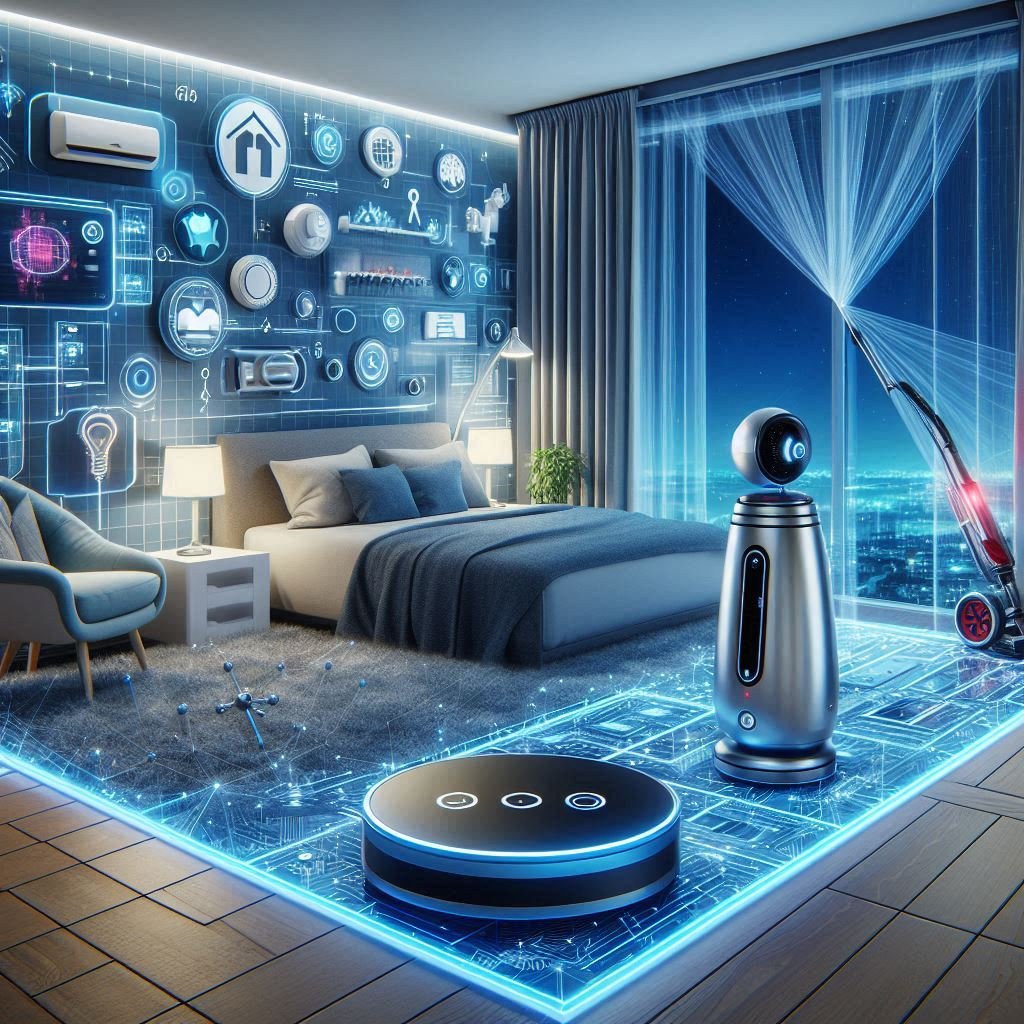
Sensors and Actuators
Sensors and actuators are the simple building blocks for IoT-enabled smart home systems. They collect data from their surroundings regarding temperature, humidity, and motion and act upon this information, whether it be changing the thermostat setting or dimming the light. These two elements are built together to realize real-time monitoring and control, hence making dynamic adjustments in line with the conditions of the home or the user’s preferences.
Cloud Computing and Data Management
Cloud computing forms part of the integral framework in which IoT works within smart homes. It gives on-demand storage and processing capacity to handle such large volumes of data being generated through devices within the IoT. Cloud platforms enable the aggregation, analysis, and management of data from multiple smart devices to avail insight and allow for advanced features to function. An example would be that cloud-based analytics may point out patterns of energy usage and propose possible optimizations that will reduce cost and enhance efficiency.
Edge Computing and Real-Time Processing
Another key technology in this landscape of the IoT in smart homes is edge computing. Processing happens closer to the source, not by sending it over to some central cloud server. This approach reduces latency, and real-time decision-making gets enabled. For example, edge computing allows a smart security camera to process video footage locally for motion detection and send out immediate alerts without the same reliance on cloud processing.
Advantages of IoT Integration in Smart Homes
Improved Efficiency and Automation
This is one of the major reasons for integrating IoT with smart homes—improved efficiency and automation. With the aid of communication and coordination between IoT devices, routine tasks get automated, and home operations are optimized. For instance, heating and cooling are automatically adjusted according to occupancy patterns and weather forecasts for attaining energy savings and enhanced comfort.
More Control and Ease of Use for Users
IoT integration allows for increased control on the part of the user and convenience in easy-to-use interfaces that manage devices in smart homes. One can easily control his home environment from any place through mobile apps, voice commands, or even automated routines. This level of control gives way to a more personal and responsive living experience where changes can easily be done anywhere.
Advanced Monitoring and Analytics
The smart home provides an IoT-enabled monitoring and analytics environment. This data, from various devices, will provide some useful insights to the consumer regarding the performance and usage patterns of his or her respective home. It opens up the possibility of making some informed decisions, such as detection of possible avenues of saving energy and potential issues before they turn into major problems.
Challenges in Integrating IoT with Smart Homes
Security and Privacy Concerns
One of the most important challenges of the integration of IoT and smart home technology is related to security and privacy concerns. By nature, IoT devices are interlinked, meaning there can be a range of inherent vulnerabilities in these devices. Having robust security countermeasures, such as encryption, secure user authentication, and timely software updating, is therefore very critical to safeguarding smart home systems and their users’ data.
Interoperability Issues
Another challenge arises in the integration of IoT devices from different manufacturers or platforms. The devices can have different communication protocols or standards that cause a problem in easy integration. Therefore, either devices supporting common standards shall be chosen or a central hub shall be used which is capable of managing and coordinating different devices.
Network and Connectivity Challenges
The performance of IoT-enabled smart homes greatly relies on how well the network is connected. Network congestion, signal interference, and bandwidth problems may cause issues with the reliability and responsiveness of smart devices. Ensuring an appropriate and reliable network infrastructure is very important for the functionality and performance of IoT systems.
Trends of the Future-IoT and Smart Home Integration
AI and Machine Learning in IoT
Artificial intelligence and machine learning surely are going to play a transformative role in the future of IoT and smart home integration. AI algorithms analyze data from smart devices for the prediction of user needs and automation of complicated tasks, all while enhancing system performance. Machine learning will help smart homes systems learn from user behaviours and adapt to changing preferences, hence providing a more personalized and intelligent experience.
Emerging IoT Standards and Protocols
New IoT standards and protocols under development will further increase the potential of integration between IoT and smart homes. New standards will emerge to provide a high degree of interoperability, security, and scalability for IoT devices. These will facilitate much more coherent and efficient smart home ecosystems—thereby, easier creation and management of a huge device collection by the user.
The Evolution of Smart Home Ecosystems
The smart home ecosystems will evolve into a more integrated and user-friendly solution. The future of smart homes ecosystems will go towards bringing many devices and services onto one platform, making sure each of them provides a seamless and intuitive user experience. Such kind of evolution will need manufacturers to collaborate much better than they do today, better standards, and much better interoperability between devices.
How to Use IoT for Your Smart Home?
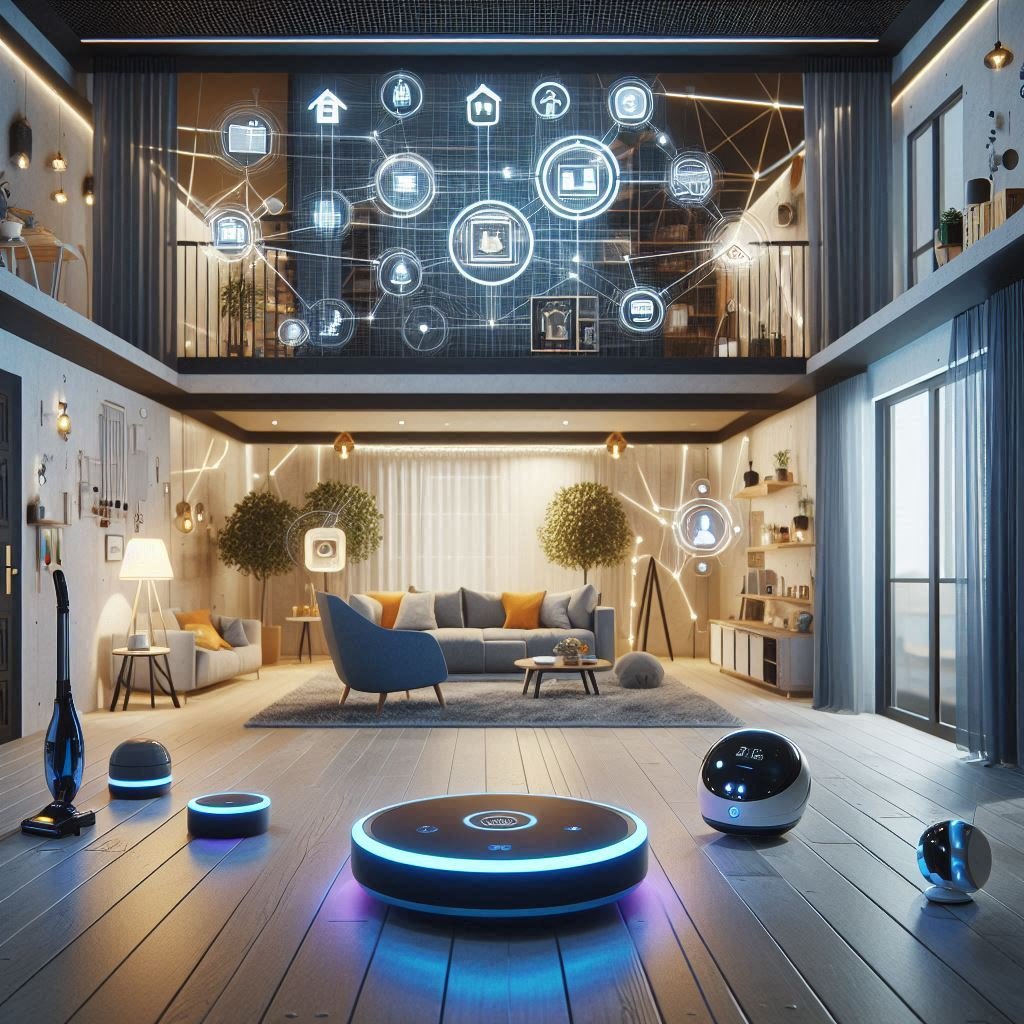
Choosing the Right IoT Devices
While leveraging the power of IoT for a smart home, choose the right devices which meet your requirements and preferences. While choosing the IoT devices, look out for compatibility, functionality, and scalability. Aim to buy devices that readily support common standards of communication and have strong support backed by frequent updates.
Seamless Integration
Inter-device or inter-system compatibility in an IoT setup should be properly tested against each other. The devices must also utilize a core hub or platform that can oversee and integrate these various devices. Configuration and connectivity-based practices like these will aid in the free flow of operations without any integration issues arising.
Best Practices for IoT Management
Follow best practices in smart home IoT management to ensure the security of the system and its performance. Keep software and firmware up to date, use robust passwords and encryption methods, and monitor network performance for continuous operation. Keeping abreast with the latest news and security best practices will enable one to manage a smart home system successfully.
Conclusion:
The smart homes represents a quantum leap in our interacting with living space. From improving security to energy efficiency, and from ease of use to comfort, smart home technology is revolutionizing a lifestyle. While you consider the adoption of smart homes solutions, remember their benefits and pitfalls and embrace that future of living with open arms.

